Enter The Gungeon is a bullet hell twin-stick shooter where I guide an adventurer through a procedurally generated dungeon in search of a magical artifact that can undo a mistake in the holder’s past. Along the way I must scrounge for guns and supplies so I can defend my adventurer against the dungeon’s cursed denizens. They bombard me with bullets and magic that criss-cross the battlefield, creating mosaics of danger I must navigate to survive. Only by conquering all five of the dungeon’s floors and defeating the dragon at its center can I uncover the artifact: The Gun That Can Kill The Past.
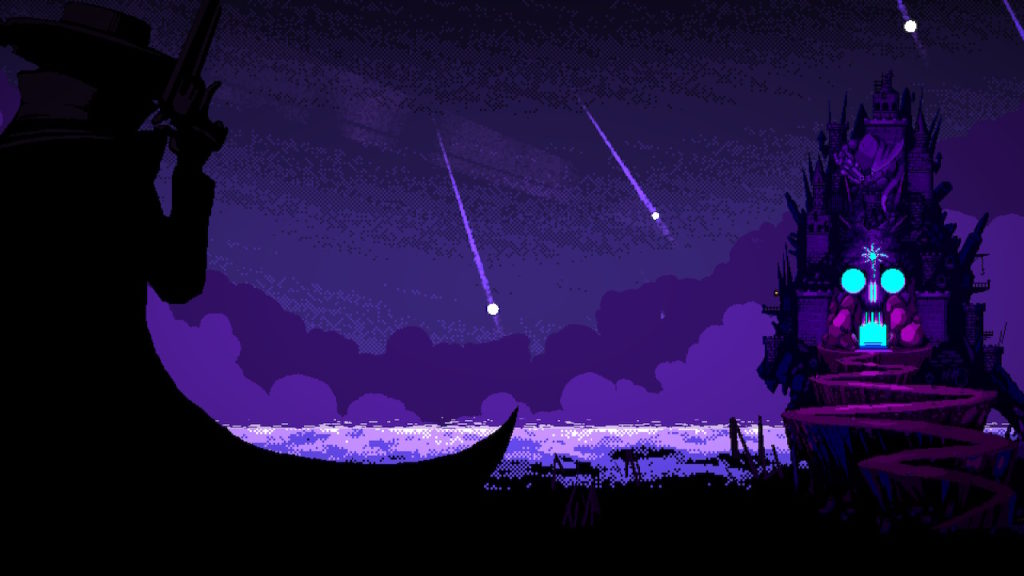
Enter the Gungeon is set in a magical fortress on a distant world. Once an ordinary fortress, it was destroyed by a colossal bullet that impacted the planet. When the fortress was rebuilt, it became a monument to guns: the Gungeon.
Worshippers and plunderers are drawn to the Gungeon, filling its halls with weaponry from across the galaxy. Perhaps influenced by some magic or energy left behind by the bullet’s impact, the Gungeon’s cultists are changed into living guns. Hiding their bodies in cloaks, they learn to fire bullets like magic. Those who perish in the Gungeon have their life force channeled into spent bullet casings, becoming the Gundead. Growing to human size and sprouting limbs, the Gundead pick up the nearest gun and hunt for other trespassers to add to their numbers.
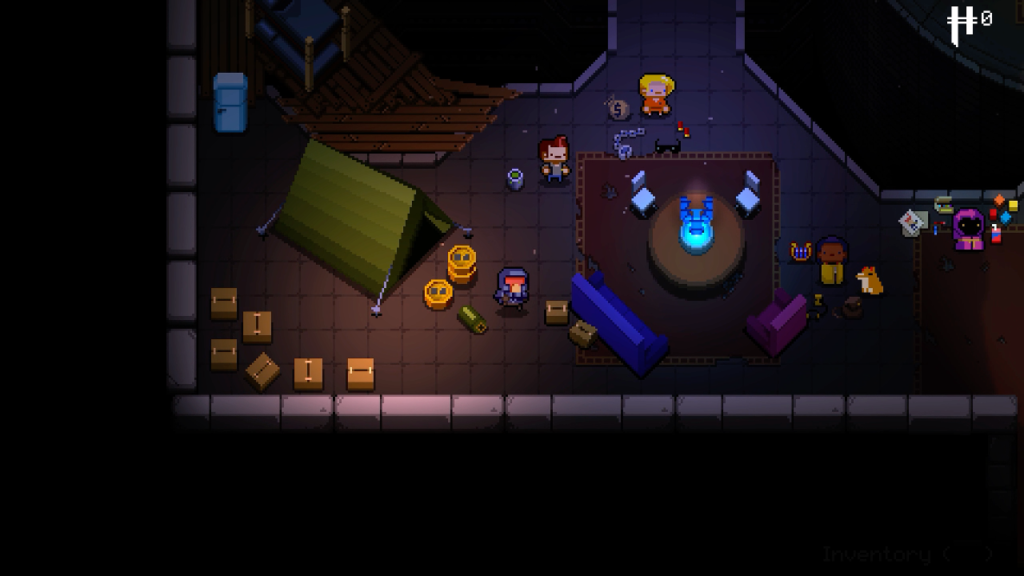
I choose to play as one of four marauding Gungeoneers who hope to conquer the Gungeon and claim The Gun That Can Kill The Past. Each has differing default equipment that makes them subtly different from each other.
The Marine’s training manual gives him increased accuracy and reload speed with all guns, and he begins with an extra hit point of armor. The Pilot gets a discount from merchants and can open chests with a lockpick instead of precious keys. The Hunter carries a Crossbow in addition to her sidearm and travels with a friendly dog who can dig up extra items. The Convict grows stronger when she takes damage, and carries a Sawed-Off Shotgun and a bottomless stack of Molotov Cocktails in addition to her sidearm. Each character plays similarly enough that I can switch effortlessly between them while still offering distinct strengths and weaknesses.
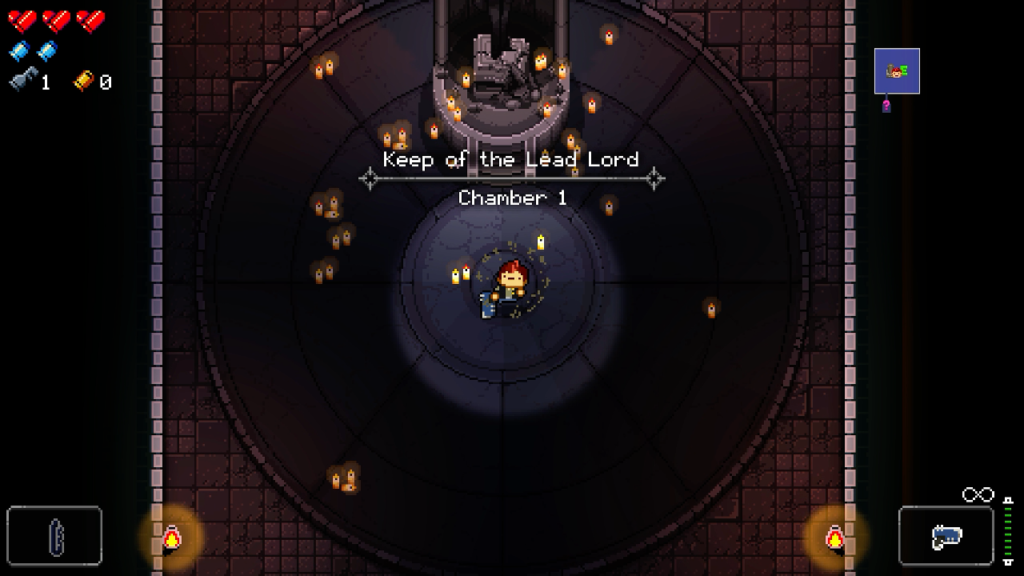
In order to help my chosen Gungeoneer undo their past mistake, I guide them through five chambers of increasing size and difficulty to the Gungeon’s center. To advance between chambers, I explore a procedurally-generated labyrinth of rooms and corridors to find an elevator, dealing with cultists and the Gundead while stockpiling keys, money, and life-restoring hearts I discover along the way.
When I enter one of the Gungeon’s rooms, all its doors seal shut. They will not open again until I have defeated every enemy in the room, all of whom immediately charge at me with guns blazing. In familiar bullet hell fashion, the bullets they fire move in slow and predictable patterns, giving me time to weave between them. This is a simple task against a single enemy. It’s when multiple enemies gang up on me that things become interesting. Their bullet fire comes from all directions in different speeds and patterns, combining to create a deadly maze I must navigate to save my Gungeoneer’s precious few hit points.
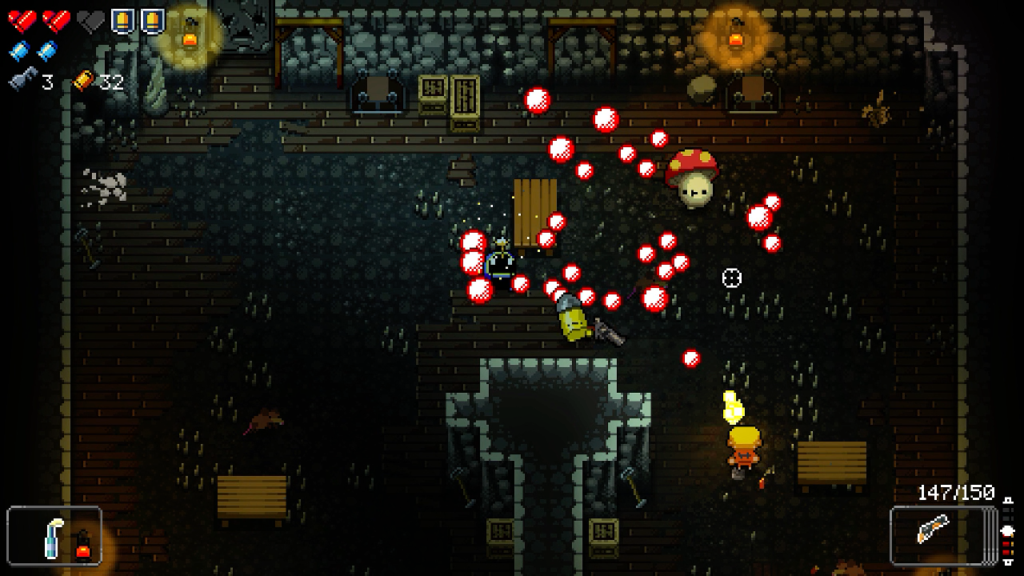
My Gungeoneer is not defenseless against the bullet hell onslaught. My primary defense is a dodge roll which may be executed in any direction, carrying the Gungeoneer forward a short distance and potentially through a solid wall of bullets. I can also flip tables around the room onto their sides, creating fragile barriers. Solid walls in some rooms also prove useful. By combining nimble movement, skillful dodge rolls, and thoughtful exploitation of each room’s geography, I can overcome the challenges each room puts before me. If I fail and my Gungeoneer dies, then they lose everything they are carrying, return to the Gungeon’s top, and I must try again.
The top of the Gungeon is called the Breach, and it is where all the Gungeoneers make camp. When I start out, the Breach is mostly empty but its many corners and rooms hint at the bustling hub it becomes. As I explore the Gungeon I can rescue characters who have been captured by gun cultists, who move into those corners and rooms to provide services.
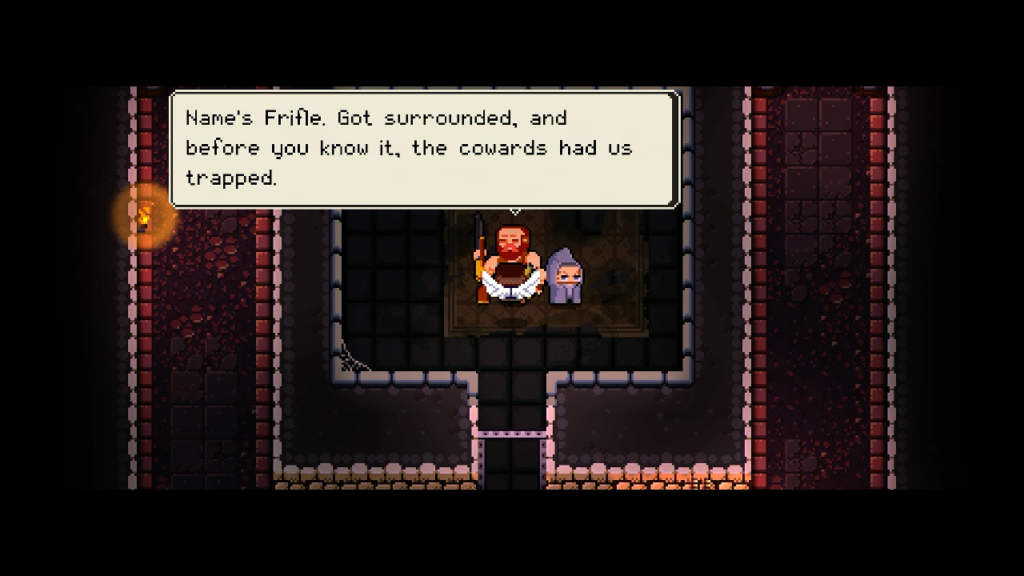
First I rescue Cadence and Ox, a girl and her enslaved robot. They set up a shop where I can purchase new guns and items. Later, I rescue Frifle and the Grey Mauser, a pair of hunters who reward me with new equipment for completing bounties on the Gungeon’s denizens. Trorc the Orc sells gear that feels like it fell off the back of an army supply truck. Professor Goopton sells toxic alien artifacts. There are over a dozen new NPCs to add to the Breach and it takes me many hours to find and rescue them all.
Items purchased in the Breach are not immediately available. Instead, they are rolled into the pool of items that may appear in my next run through the Gungeon. I need the new powers these abilities bestow to clear the Gungeon’s deadliest challenges. Gunknight Armor gives me extra hit points at the start of every chamber. New ammo types change the behavior of my bullets. Other items only function when I activate them. A Medkit restores my lost hit points. A Jar of Bees unleashes a swarm of killer bees on my enemies.
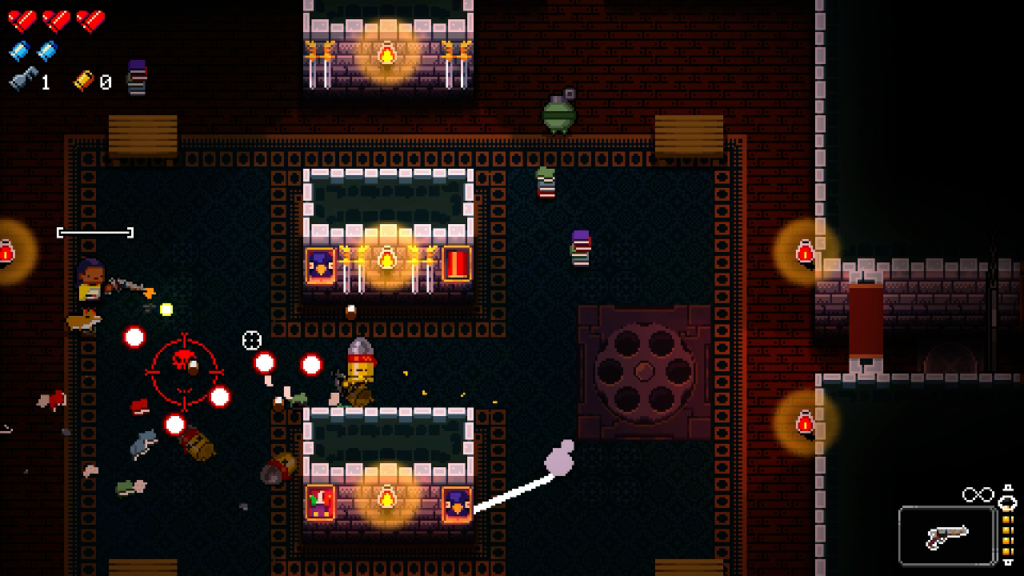
The real prizes are the guns. Each Gungeoneer begins a run with a basic sidearm with unlimited ammunition, but these guns are weak and inaccurate at long distances. To counter the Gungeon’s increasingly powerful guardians, I must switch to the more effective guns locked away in chests in each chamber.
There’s a good variety of functionality between the available guns. Some fire a rapid stream of bullets. Others fire a single, powerful bullet. Some need to be charged before they can be fired. Others will keep firing as long as I hold the trigger until the clip empties. Learning which guns are useful in which situations constitutes a good chunk of my learning curve.
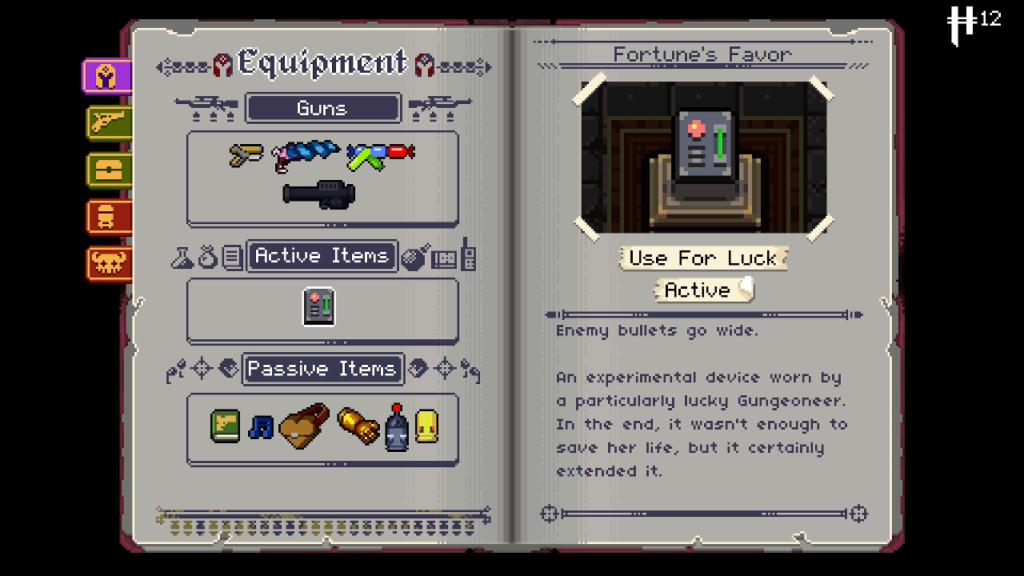
Almost every item and gun references something in pop culture. Fortune’s Favor is an electronic chestpiece that was once “worn by a particularly lucky Gungeoneer” that causes bullets to veer away from the wearer. The Heroine is an arm-mounted laser cannon that fires ultra-powerful shots when charged for several seconds. The Heck Blaster fires dozens of bullets a second from its seemingly bottomless chamber. The Zorgun fires homing bullets, and the last bullet in a clip fires a rocket with a variety of unexpected effects.
Hundreds of guns and tools drawn from dozens of shows, movies, and videogames have found their way into the Gungeon. Every time I recognize one is like an in-joke between myself and the developers. We share a chuckle across time as I mutter “I understood that reference.”
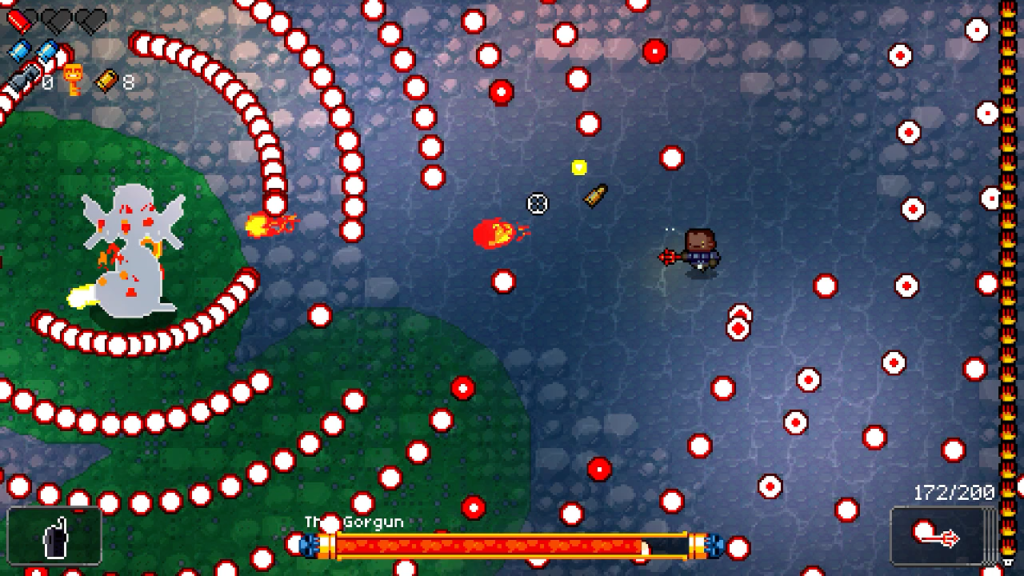
I must wield these fantastic firearms if I hope to stand a chance against the bosses who guard the Gungeon’s chamber exits. Where standard enemies create bullet hell scenarios by combining multiple simple patterns into complicated obstacle courses, bosses are typically singular behemoths who flood the screen with waves of bullets.
The Gorgun, a gorgon dual-wielding uzis, emits a scream that sends out a long wave of bullets in all directions. I must follow the narrow safe path that appears in this wave to avoid taking damage. The Bullet King, a corpulent Gundead on a floating lead throne, alternates between curved bullet blasts I must dodgeroll to avoid and straight bullet waves I must stand still to avoid. The Wall Monger is a literal wall of guns that fires seemingly impenetrable screens of bullets on either side of the battlefield, forcing me to dodge frantically from left to the right to survive. Against all these bosses I must return fire with my own guns in the hope I can whittle down their health before I make too many mistakes that whittle down my own.
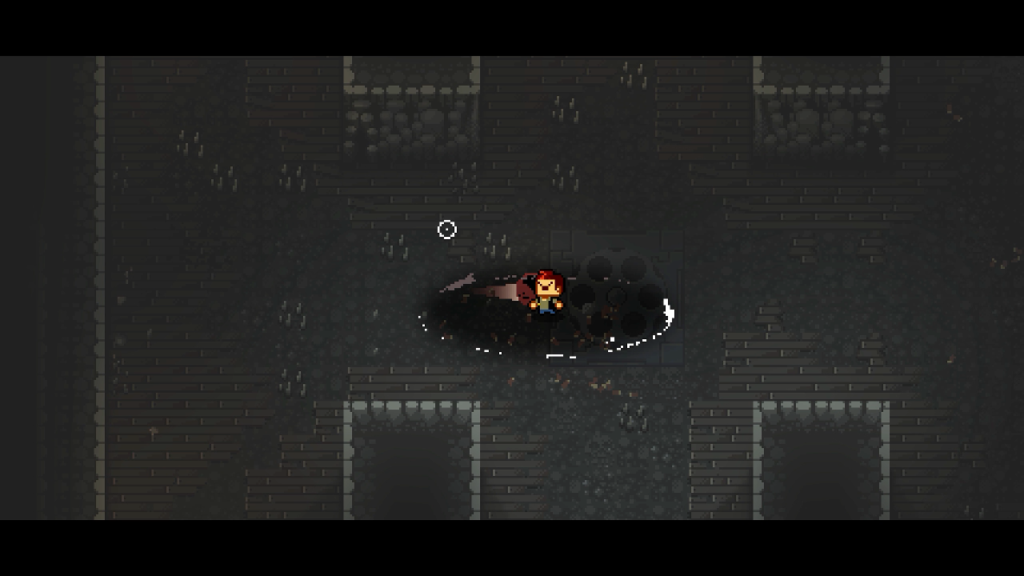
Overcoming the Gungeon’s challenges requires all of my skill and a lot of luck. My first few runs are an embarrassment, often not even making it out of the first chamber. Until my skill grows to where I can overcome the first chamber and its boss with my Gungeoneer’s rudimentary starting equipment, I must rely on lucking across an especially powerful gun that can burn a boss down faster than I can make fatal mistakes. The Hegemony Credits I need to add new weapons to the Gungeon’s item pool only drop from bosses, so until I reach that skill level I am stuck with the default selection of randomly appearing guns. It’s only through practice and persistence that my skill grows to where I can begin adding to that pool.
This is the point where luck begins to overtake my skill in determining my success. I begin to recognize that finding certain weapons or items early on ensures that I will go much further in that run. Guns like the Yari Launcher and Vulcan Cannon shred boss hit point meters, making fights much shorter, lessening the chance that I will make a mistake and lose a hit point. Item drops also feel significant. On some runs I am flooded with more hearts and keys than I can use. On others I feel every mistake even more because I find no hearts to recover and can’t open chests to get useful weapons.
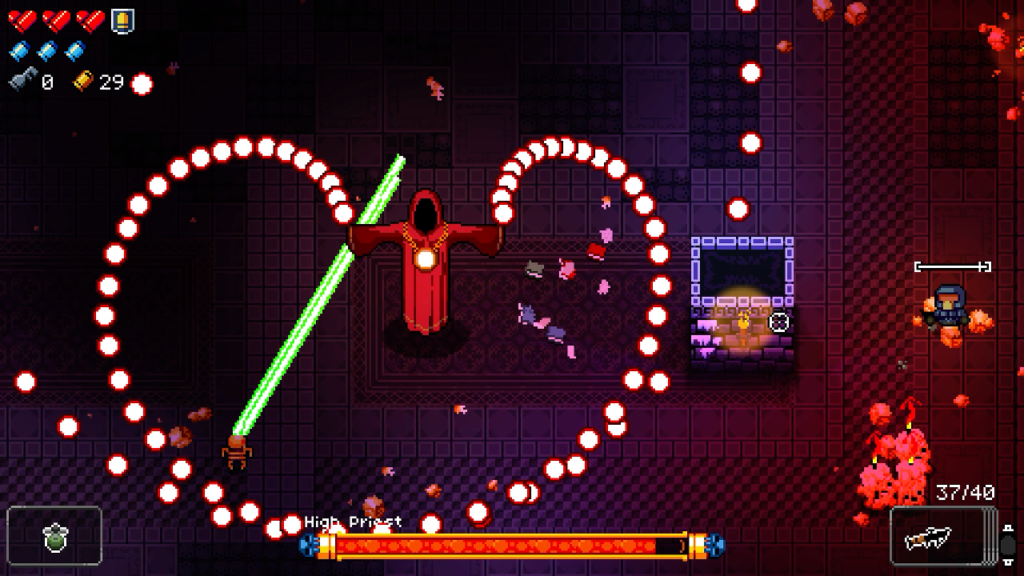
The randomness of the Gungeon itself can also be a factor. Certain enemies or even certain room layouts appearing or not appearing can radically change each chamber’s difficulty. This is especially felt in the bosses. Each chamber has a pool of three bosses which can appear, and a successful run often feels like the difference between getting the Gorgun instead of the Ammoconda or the Cannonbalrog instead of the Mine Flayer. Even the randomly chosen layout of the boss’ chamber can make a huge difference—the Gatling Gull is either the hardest or the easiest of the first chamber bosses depending on whether I fight it in a room with indestructible barriers I can hide behind.
Then there are the days where luck and skill factors intercept and, despite my hours of practice, I suddenly find myself unable to dodge a simple stream of gunfire from a basic enemy. Everyone is entitled to have an off day and having one says nothing about one’s worth or skill, but Enter the Gungeon seems to punish me especially hard for making simple mistakes. It does not allow for the slightest distraction or feelings of fatigue. To succeed, I must be at peak performance, and in a busy adult life this simply isn’t always possible.
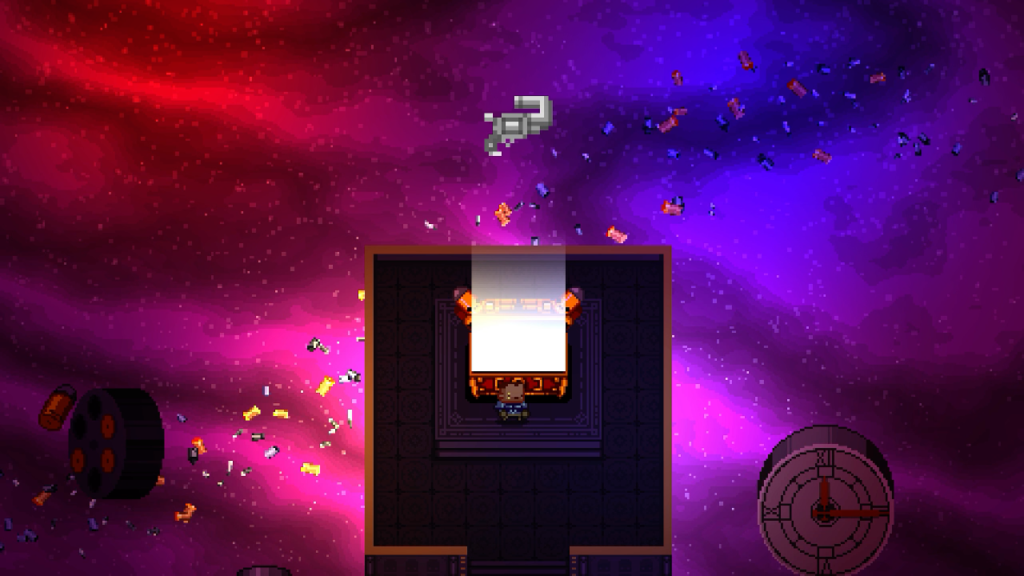
In almost one hundred runs in over forty hours of playtime, I defeat the Gungeon and claim the Gun That Can Kill The Past exactly once. It is a moment of awesome gratification, but it also seems built on monumental effort and a daunting intersection of luck. I have to practice enough to overcome the many trial-and-error challenges presented by all five Gungeon chambers. Then I have to be lucky. I have to find a good selection of useful guns. I have to get useful random drops of hearts, keys, and money. I have to get a friendly Gungeon layout and a favorable selection of bosses (and indeed, in my one successful run I get by far the easiest bosses in each chamber). And in the most absurd kind of luck, it needs to be a day where I can play Enter the Gungeon without putting forth an embarrassing performance.
Enter the Gungeon is hard, and it should be. But I believe that difficulty is based a little too much on luck when it feels like only an extraordinary confluence of factors can lead to my success.
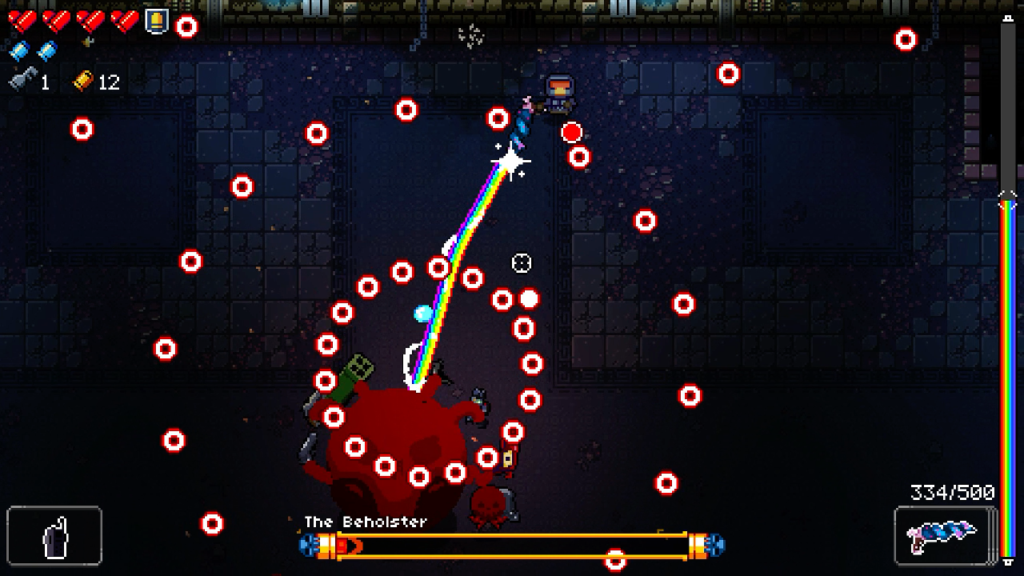
At no time does Enter the Gungeon take itself seriously. A videogame where I can use the Ghostbuster’s Proton Pack in combat against a gun-toting D&D Beholder called The Beholster has no business being serious. But its absurdity masks incredible difficulty. Maybe if I dump a few hundred more hours into it I can reach a point where I conquer every chamber using only my Gungeoneer’s basic sidearm. That can be a good time. Around hour thirty, however, I find myself anxious to move on to something else that feels like it does a better job respecting my time and effort. Players who appreciate Enter the Gungeon’s barrage of referential humor and grueling pace will find the most enjoyment from it, but it’s hard to recommend it to any but this narrow group.